- Home
- slideshows
- miscellaneous
- I drove a $250,000 Lamborghini Urus to see if the radical SUV lives up to the hype - here's the verdict
I drove a $250,000 Lamborghini Urus to see if the radical SUV lives up to the hype - here's the verdict
The 2019 Lamborghini Urus, the most flamboyant SUV on the market, arrived at our New York headquarters on a snowy day. The very Lambo color was "Giallo Auge" — that's Italian and Spanish for "Yellow Boom." Subtle!

And booming the Urus is. It's named for an extinct wild ox (Lambo's have traditionally been named for legendary fighting bulls). Price as tested was $250,000.
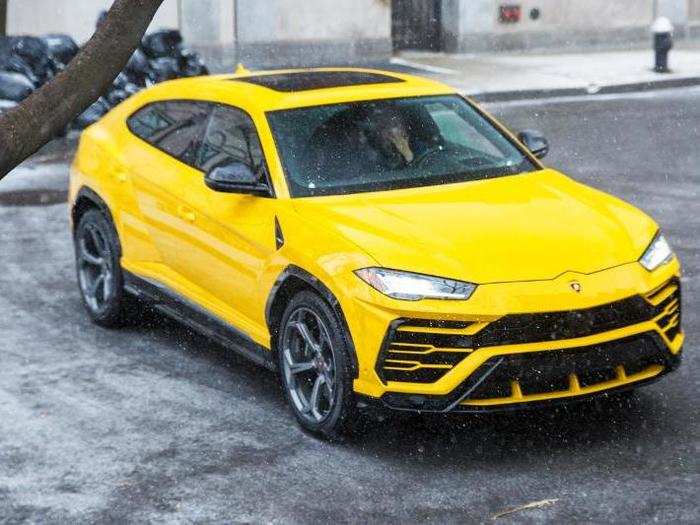
The designers have literally done as much as possible to scale up a supercar to SUV proportions. The Urus is all angles and slashes, with a steeply sloping roofline and shark-attack vibe that isn't generally seen with utes.
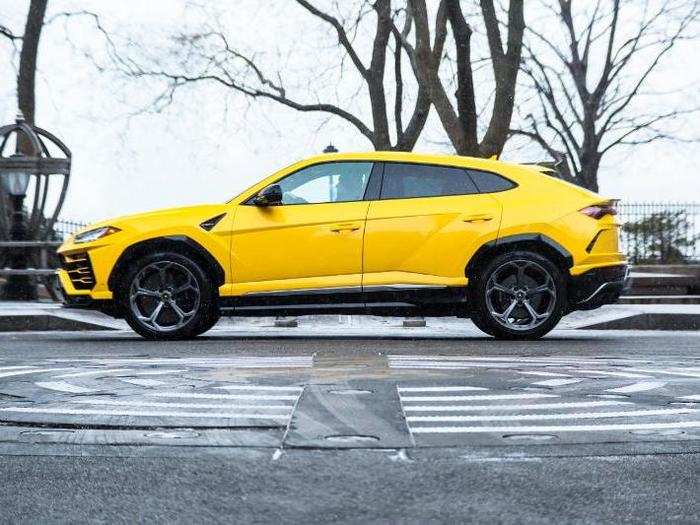
The front end is like something out of the movie "Tron."
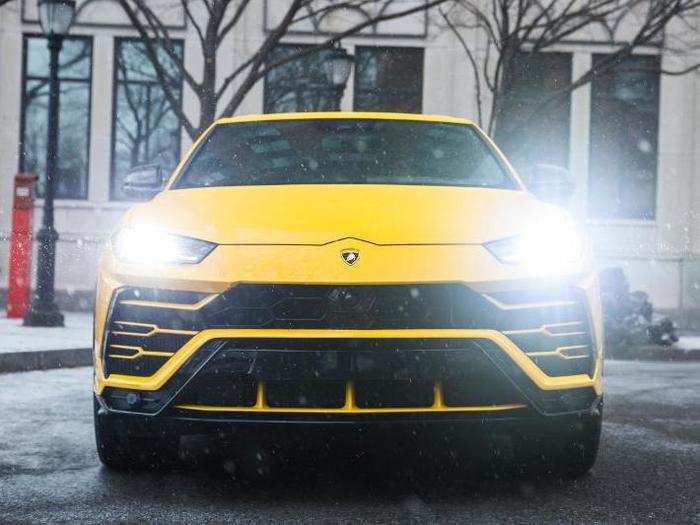
The Lamborghini Urus, like the brand's Huracan supercar, boasts a hexagonal motif, echoed throughout the car, outside and inside. The grille gets the honeycomb, blacked-out treatment.
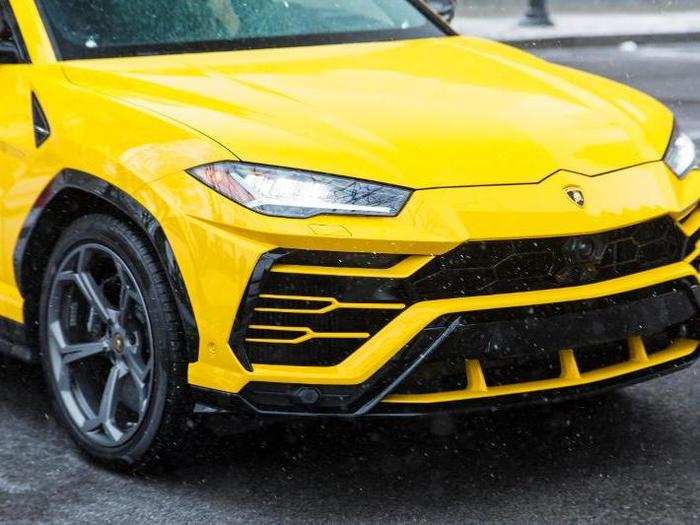
The headlights are full LEDs that can adapt to driving conditions.
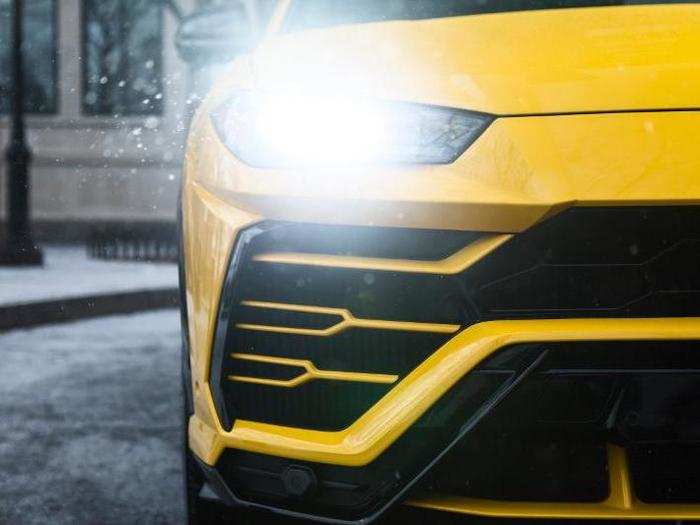
The Urus may be named for an ox, but the badge on the hood is pure fighting bull.
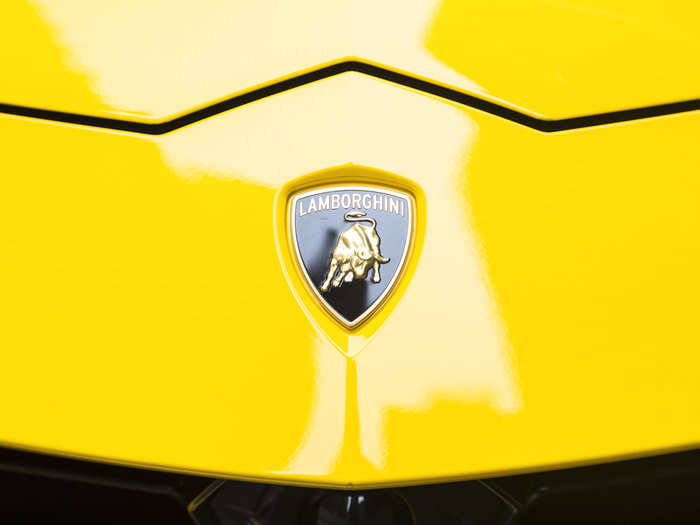
The 22-inch wheels are $700 extra. The carbon-ceramic brakes are not, but the black calipers are $1,100. Our Urus tester had a base price of $200,000 — the add-ons took it to $250,000.
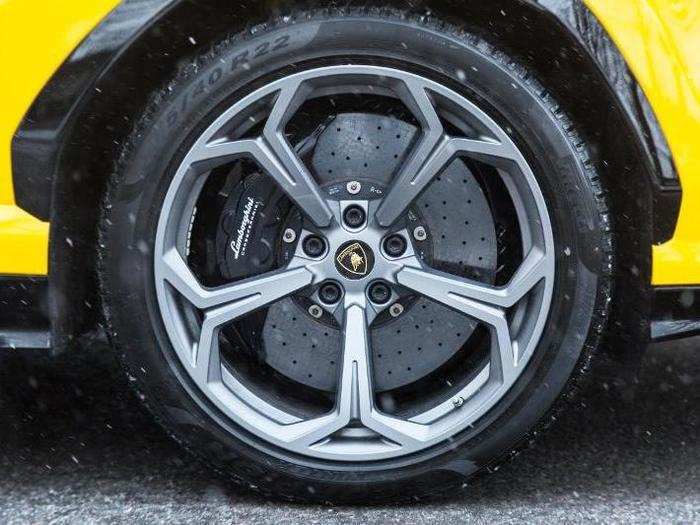
For a super-sport-utility-vehicle, the Urus appears to have a high stance, but the air suspension can raise and lower the vehicle. It's supposed to perform as well on the track as it does off-road. But do you actually want a $250,000 rally car?
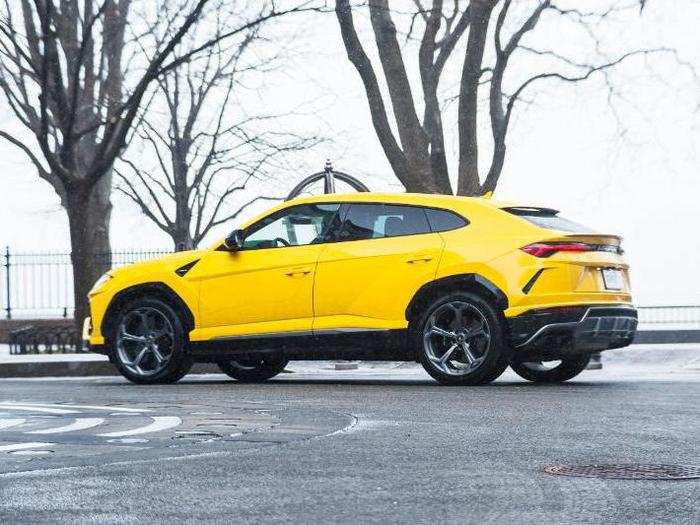
Overall, the Urus' design is kind of brilliant. When Lamborghini said it intended to build an SUV, the jokes started coming. But as the look of the machine has rolled out over the past few years, it's become obvious that Lambo genuinely worked through the integration of supercar and truck. Bravo!
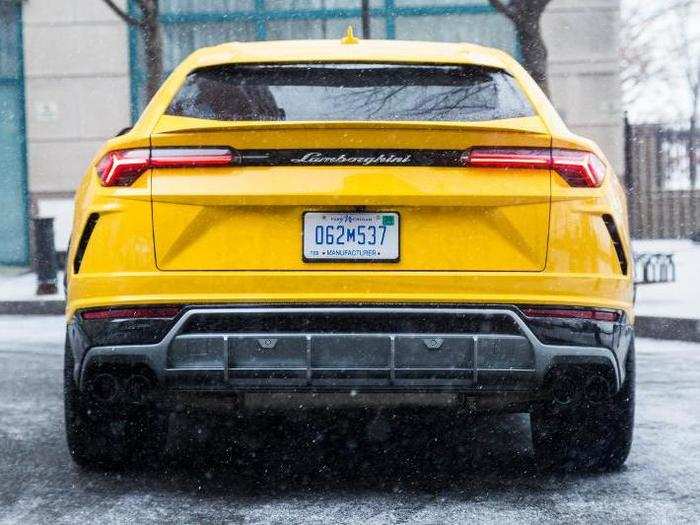
Cargo capacity is a respectable 22 cubic feet with the rear seats up (the rears on our tester couldn't be lowered). That was enough to handle our video team's gear, and I was even able to go to IKEA and get two desks and a chair in there, with a bit of interior rejiggering.

On to the meat of the machine: the 4.0-liter, twin-turbocharged V8, making 641 horsepower with 627 pound-feet of torque. Yep, massive in every way, including fuel consumption: 12 mpg city/ 17 highway/14 combined.

This is one impressive motor, tuned to take on everything from racetracks to rock-strewn trails. The power is routed through an 8-speed transmission to the Urus' full-time all-wheel-drive system, which biases the rear wheels in sport modes but distributes the grunt to all four when the conditions get gnarlier. The Urus also has rear-wheel steering.
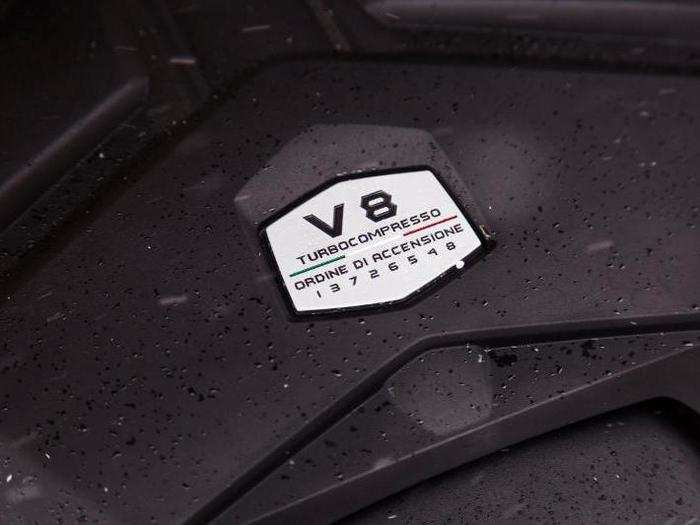
Much of the "Nero Ade" interior is derived from the Huracan and Lambo's sibling in the VW Group, Audi. (Note the hexagonal dashboard air ducts, which are pure Lambo.)
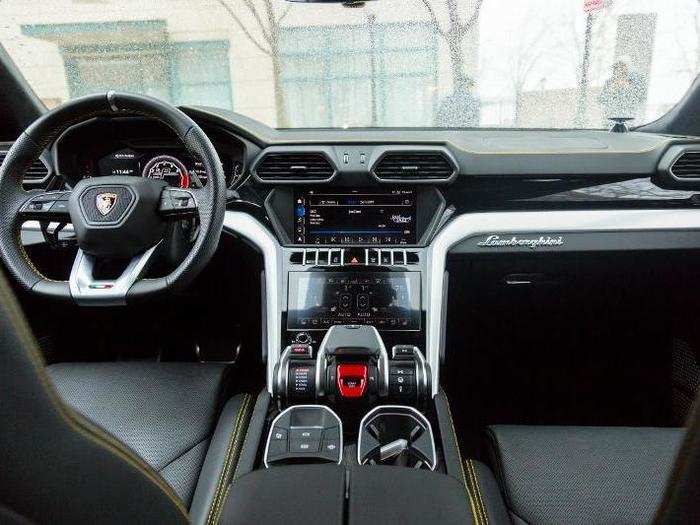
The interior conjoins sportiness — the yellow topstitched leather, for example — with a fighter-plane cockpit vibe. One of my passengers succinctly described how the Urus differs from other Lambos: "More legroom." The front seats are both heated and cooled.
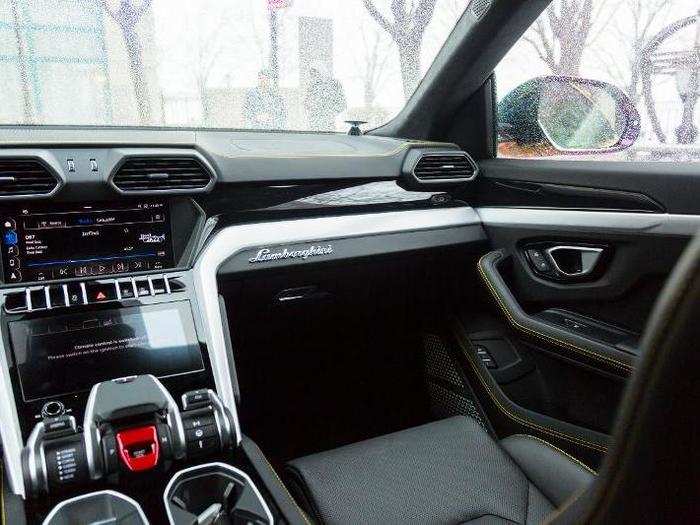
The script nameplate appears outside and in.
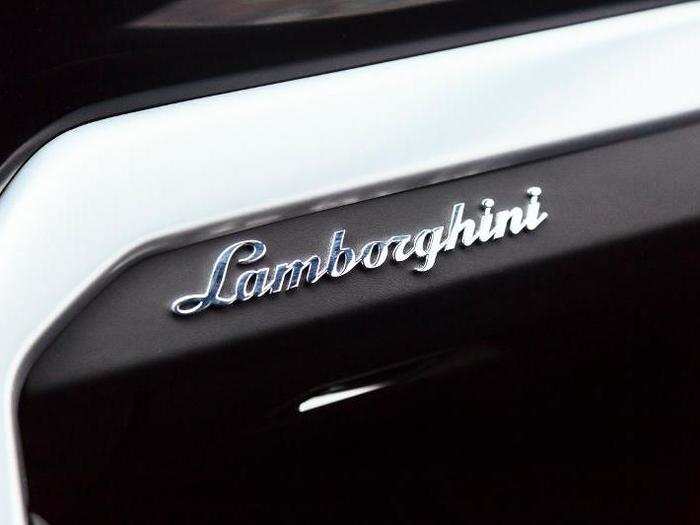
Cupholders! Check out that ambient lighting — it's over $3,000 extra.
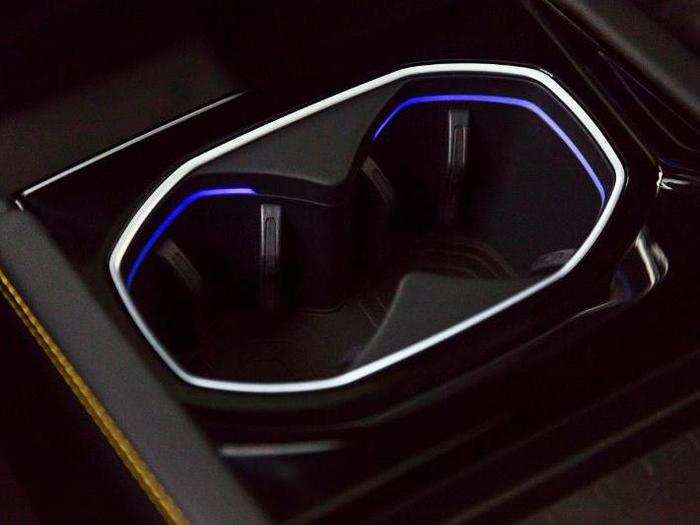
The rear seats are snug — but there are rear seats!
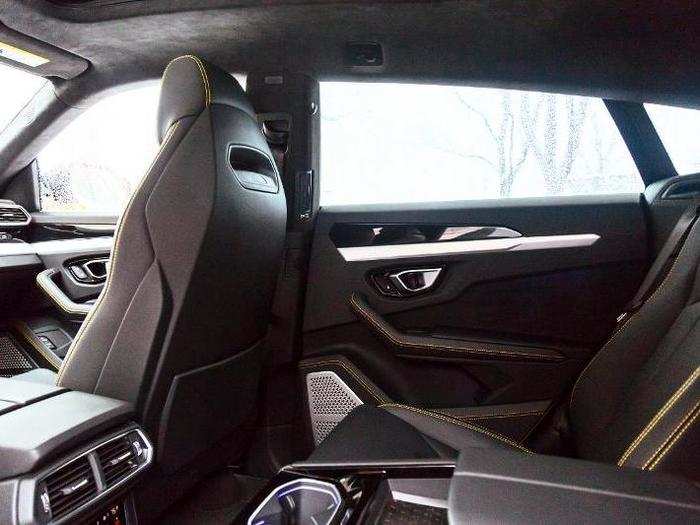
In effect, they're more like two extra front seats, slim and well-bolstered.
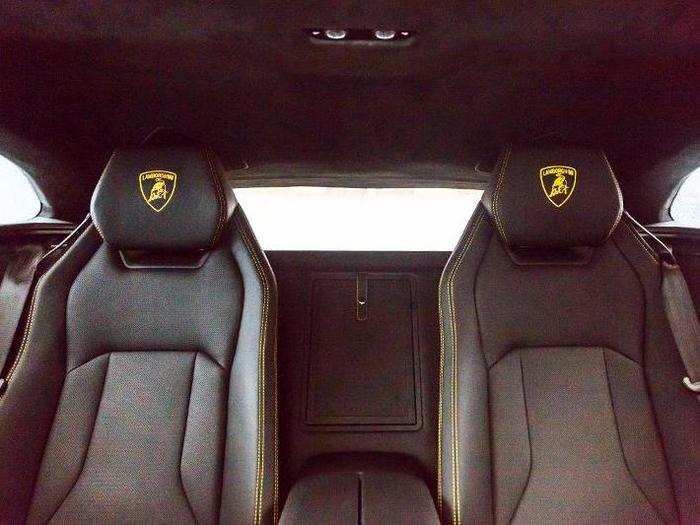
The headrest logos will cost you $900.
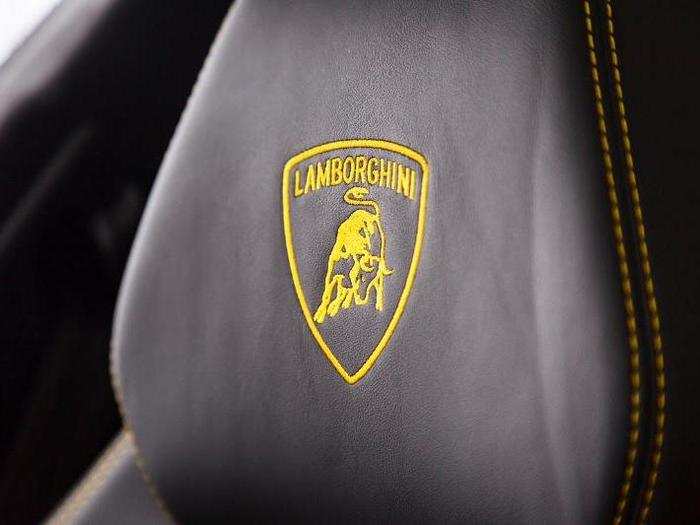
Let's walk though the nerve center of the Urus — and the part that fans of the brand should pay close attention to. Does this thing feel like a Lambo behind the wheel?
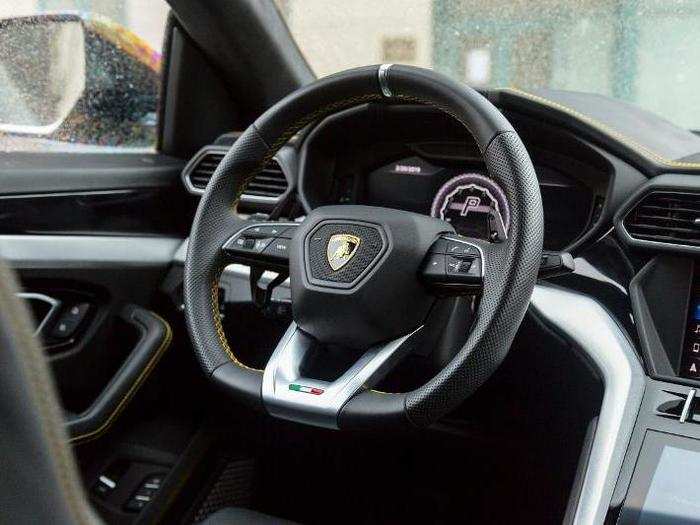
The flat-bottomed wheel is wrapped in stitched, perforated leather, and is complete with Italian-flag colors to accompany the switchgear that controls some vehicle functions.
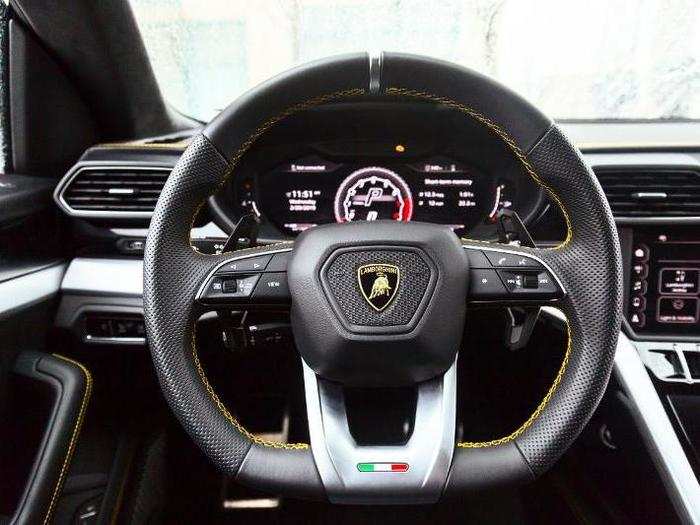
The hexagon theme recurs here.
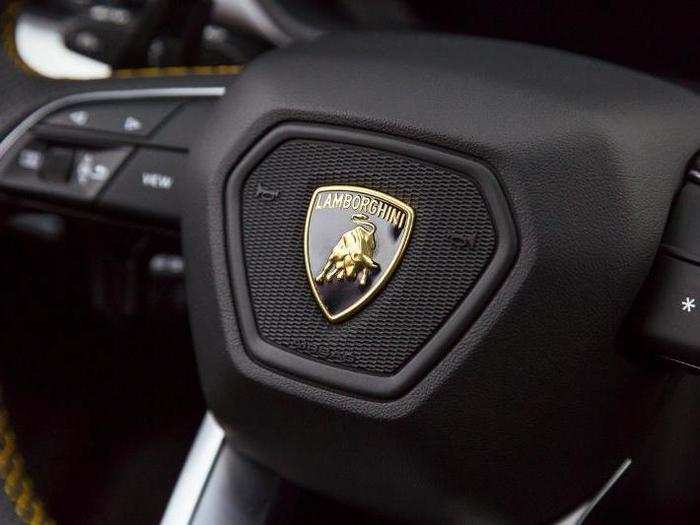
The starter is below the red switch, and the shifter sits above, like an airplane's throttles.
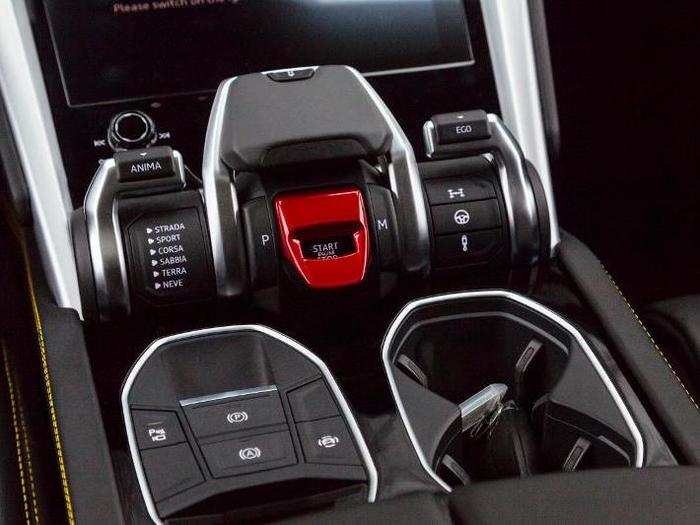
The anima selector is here you choose your drive modes. There are six, three for on-road and three for off-road and poor conditions: Strada for everyday, Sport for fun, Corsa for serious fun, Sabbia for sand, Terra for rocky terrain, and Neve for wet.

There's also an aptly named "Ego" mode that can be customized to your preference, as far as steering response, suspension, and throttle ae concerned.
The digital instrument cluster adapts to drive modes.
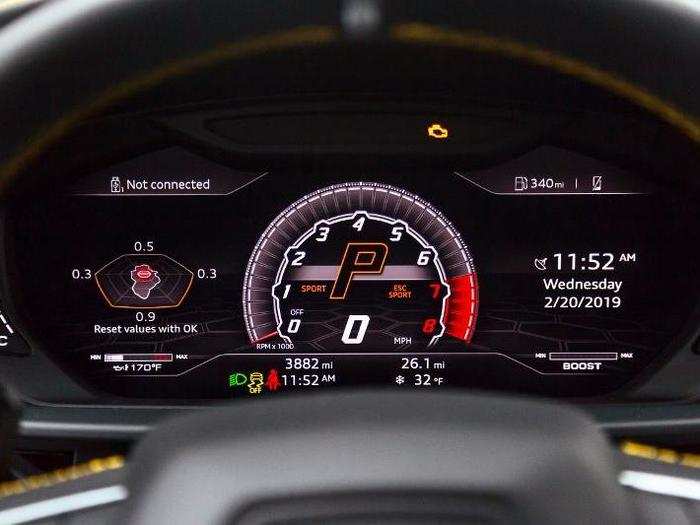
Here it is in Corsa, the most intense mode, with the tachometer front and center.
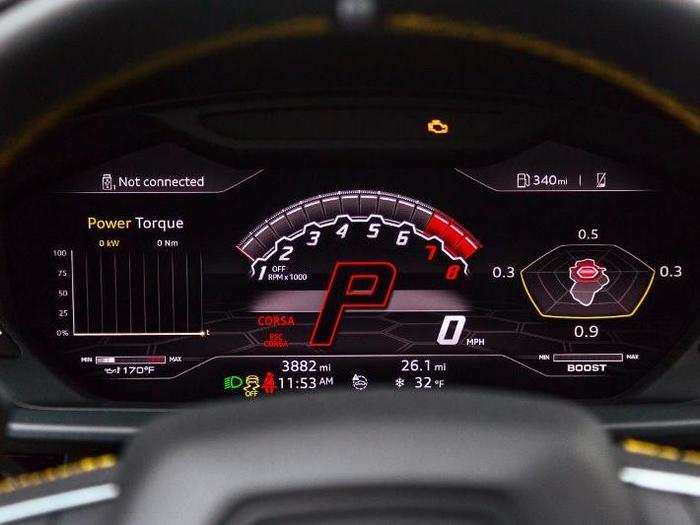
The Urus' two-screen infotainment/climate control interface is borrowed from Audi.
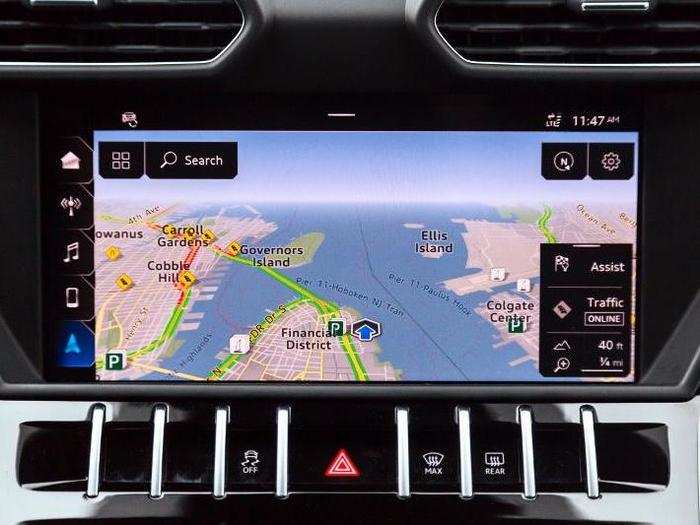
The main unit is a touchscreen ...
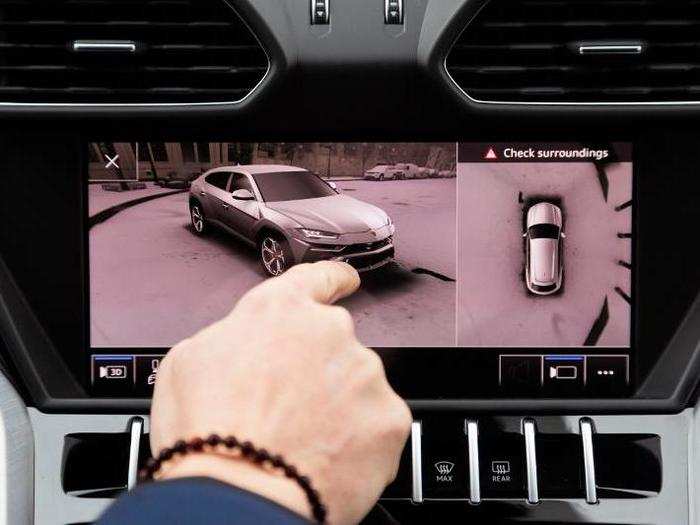
... As is the lower screen. In practice, this takes some getting used to. But it's effective.
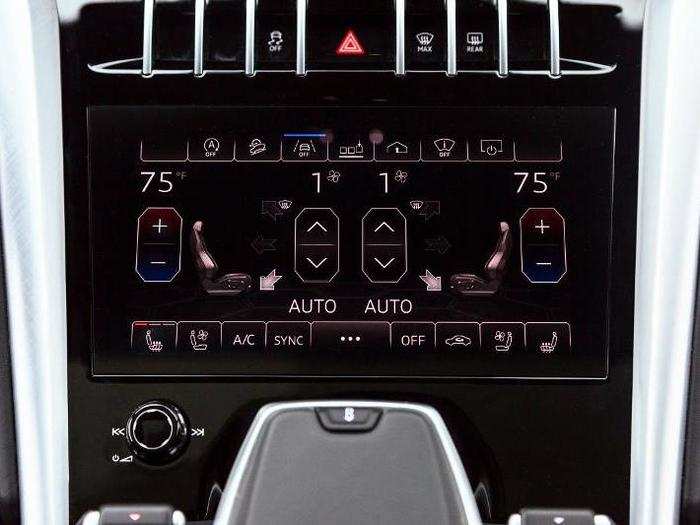
The Audi tech that undergirds the system is first-rate.
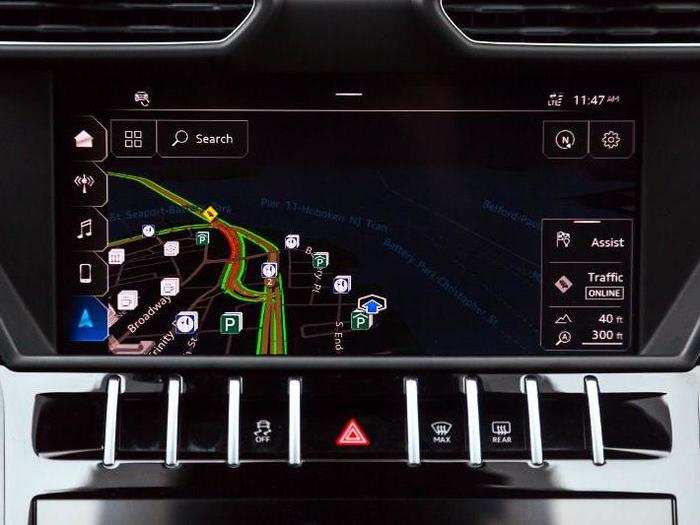
The audio system is a sweet-sounding Bang & Olufsen 3D Advanced setup, and it is not cheap: $6,300. That's an expensive option, but the full suite of driver assist features matches it.

Bluetooth connections are easy, there's Apple CarPlay and Android Auto available, you have USB ports for devices, and ...
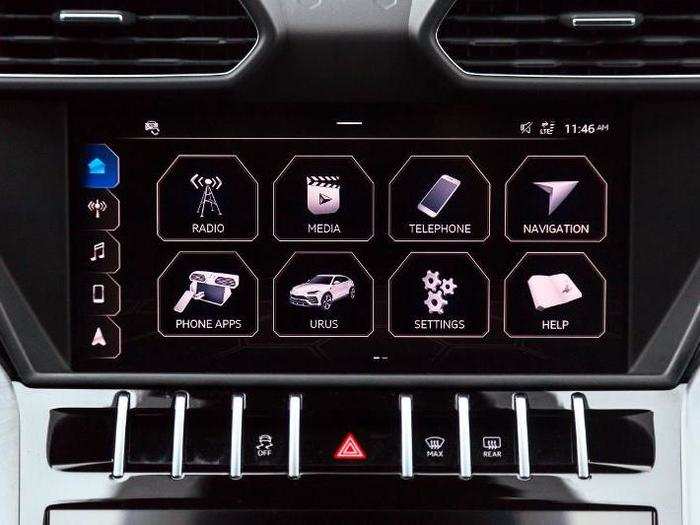
... Lambo has embedded numerous vehicle-setting controls.
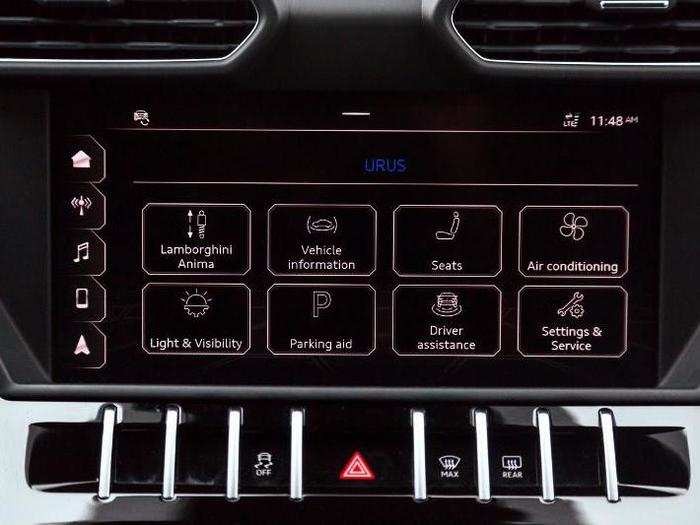
Among these is a rundown of drive modes and what effect they're having on the Urus.
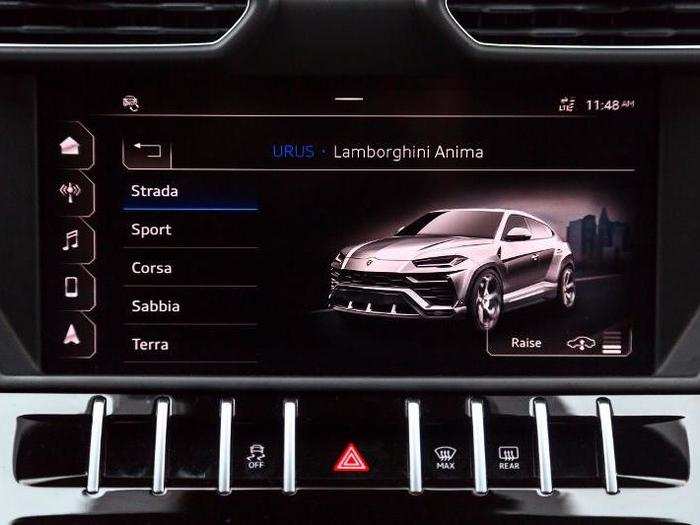
So what's the verdict?

We did a "Real Reviews" episode on the Urus to see how the world's first "super sport utility vehicle" (SSUV) fared in some real-world situations, and you can watch here to see how it did (spoiler alert: it lived up to its billing, although my eight-year-old was a harsh critic).
The upshot is that the Urus is every bit a Lamborghini and a worthy, first SSUV. As it turned out, I got to at least sample how it's 40/60 front-rear-wheel traction distribution adapts to lousy weather, and it adapts magnificently. I drove the Urus into and out of Manhattan in a sloppy snow-and-ice storm, and while in a Huracan I might have been extremely nervous, in the Urus I was in command. I can only imagine what this thing is like on dirt roads.
In more benign conditions, the Urus is ferocious. It has abundant horsepower and abundant torque on tap in any gear, and even if you aren't busting toward the legal speed limit — testing the 0-60 mph dash of 3.5 seconds or tasting the top speed to 190 mph — you can always do that Lambo thing, making use of the the paddle shifters and the manual mode, wringing unholy engine howls and whines from the V8 while tooling this two-ton beast around at mellow velocities.
What it genuinely does that, most other SUVs don't is inspire cornering confidence. I had no qualms about diving into a curve and powering out, as the suspension and steering leaned in and the throttle let me hover between braking and accelerating.
We've driven sporty SUVS a-plenty at Business Insider, but the Urus is in a new category. It's over-the-top design advertises its Lamborghini-ness, and while the driving dynamics aren't Huracán-y or Aventadorish, they are pretty freakin' flashy. If it hadn't been for the elevated driving position and the somewhat more plush seats, I might have thought at certain moments that I was in one of those cars.
The three boxes of flat-packed furniture in the cargo hold — as well as a passenger in the back seats — were a reminder that I wasn't.
So what's the point, ultimately, of the Urus?
Well, it has to be all Lambo, but it also has to sell to people who don't have that much use for a supercar or hypercar. Or maybe they do and just want a second Lambo in the driveway. Yes, I know, that's sort of ridiculous. But that's why the Urus exists.
And I, for one, am glad it does.
Popular Right Now
Popular Keywords
Advertisement